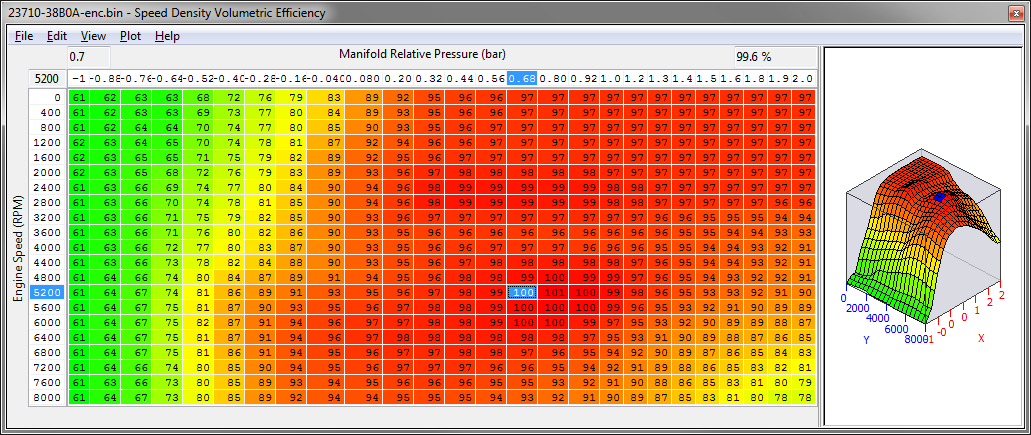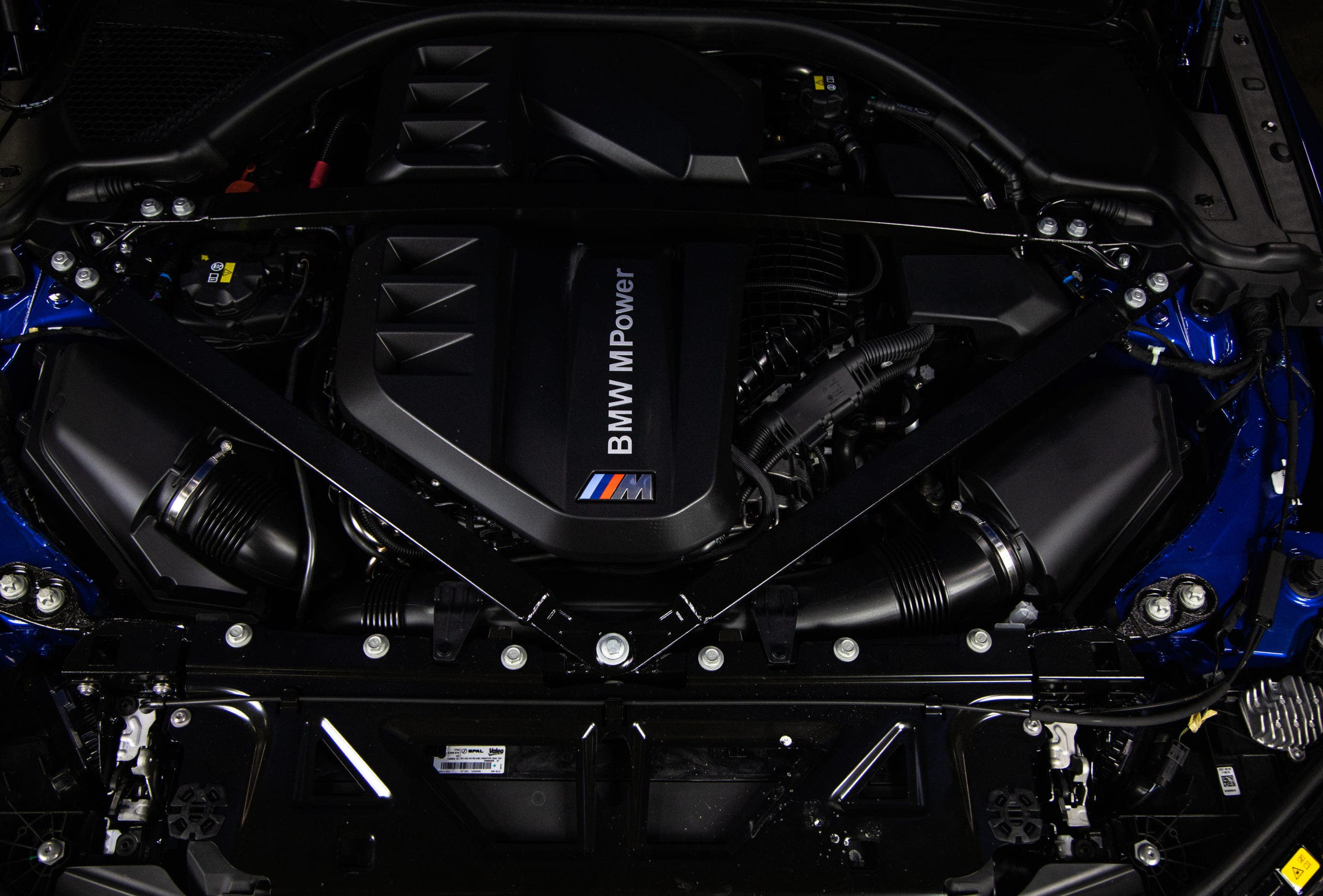
Every internal combustion requires air and fuel to run correctly. No matter how complex the engines can get, the perfect mixture of oxygen and gas or diesel is needed to continue the series of controlled explosions that ultimately propel you to work in the morning. In the days of yore, otherwise known as the time basically before the 1980s, this mixture is achieved with the lost art of carburetor tuning. We're no longer in the stone ages, so modern engines rely on electronic fuel injection or EFI to accomplish the perfect fuel mixture. The vehicle's computer sorts it out. How exactly? I'm glad you asked!
It all boils down to the means of metering the amount and quality of the air entering the engine. From there, the engine control unit, or ECU, can instantly adjust the air to fuel mixture, with no need to break out the flathead screwdrivers with a sudden temperature change. For many vehicles on the road today, there are two main strategies for engine tuning, MAF and Speed Density. Each form of tuning has its pros and cons in terms of efficiency, performance, and, most importantly, in our situation, modification. The operation of MAF and speed density tuning directly affects how we approach the development of a selection of our performance parts, specifically air intake kits.
Engine tuning is a very in-depth and nuanced topic and covers timing, turbos, and plenty more. For this post, we're only scratching the surface with the difference in air metering operations.
MAF
We start with the most common and less convoluted system of the two, Mass airflow or MAF. Vehicles operating on a MAF-based system, on the most basic iteration, really only need one sensor in a calibrated sensor housing. More modern systems will also utilize MAP (Manifold Absolute Pressure) sensors and other readouts to determine the correct amount of fuel to deliver, but the key is the MAF sensor.

A MAF sensor is essentially a heated wire that reports airflow as a voltage change. Basically, since the sensor sits within a calibrated housing, the ECU can calculate the airflow using the housing's circumference with the voltage reading from the sensor. With this information, the ECU disperses fuel based on the computed air in the cylinder for the optimal burn. An oxygen sensor monitors the air to fuel mixture in the exhaust stream to check the ECU's work. The sensors report back to the ECU if the mixture is too rich or lean, and makes both instant or interval corrections, otherwise known as short-term and long-term fuel trims.
MAF based systems are more advantageous for the manufacturer since it's simple and inexpensive to build. Only one sensor is really needed in theory, which means lower costs to make and a cheaper MSRP at the dealer.
However, the MAF system has plenty of disadvantages. Generally speaking, it's more sensitive. For example, dirt and debris in the intake will cause inaccurate readings, along with vacuum or boost leaks. In addition, the placement of the MAF housing has to be on a straight section of the intake, giving OE engineers a challenge with packaging.

The MAF housing size is also consistently a hurdle. The factory-calibrated size means that it becomes a choke point with modified vehicles, but increasing the diameter can hurt the sensor's resolution, making it less accurate at idle and low throttle. The sensor itself is also susceptible to housing adjustments. When designing new aftermarket kits, any adjustments made when designing new aftermarket kits run the risk of causing check engine lights at the very least or not even starting due to skewed fuel trims. During our intake development process, we perform regular checks of the fuel trims to ensure our new design operates within the factory specifications.

While the MAF-based tuning strategy is a much more finicky system, you can still find it on top performers. From the characteristic low-down grumble of an EJ25 Subaru boxer to Ford's modern Mustangs, all the way up to Nissan's supercar killer, the GTR. These examples have MAF sensors under the hood thanks to advancements in tuning software and hardware alike.
Speed Density
Speed density is the older but more sophisticated method of fuel delivery. The MAF is out, and this system relies on a combination of the MAP sensor and an intake air temperature sensor. These two data points are used in conjunction with the ideal gas law to create a volumetric efficiency table.

The volumetric efficiency table is essentially a calculation of how much air enters the cylinder at a given engine speed, temperature, and pressure, measured in a percentage. So, a 100 means that 100% of the cylinder is filling with air, and values above 100 generally are reserved for boosted vehicles but occasionally can be reached on naturally aspirated engines. Simply put, it's how effectively the intake air is filling the combustion chamber. With these calculations complete, the ECU injects a precise amount of fuel based on the current engine speed, temperature, and manifold pressure. Generally, fuel mapping only needs to be changed when changing components that will change the engine's volumetric efficiency, like aftermarket camshafts or cylinder heads.

Like the MAF-based system, speed density also uses oxygen sensors to check the ECU's math. If the mixture is coming out too far in the rich or lean direction, the ECU can compensate the fuel map to balance out the mixture.
While speed density might be the older of the two options, you could say that it aged well, and it's the preferred fuel strategy for most performance-based production vehicles, like the Kia Stinger, G80 M3, and Ford Raptor. Since there's no restrictive MAF housing or picky MAF sensor, there is much more flexibility with airflow, tuning, and engine design. Also, the evolution of this fuel management system means vehicles are leaving the factory with wide-band O2 sensors for more accurate mixture compensation and multiple pre-loaded fuel maps for precise fuel injection.
When developing components for speed density vehicles, we find ourselves much less restricted in our design. Yes, there are some limitations on sizing and air volume increases, but not nearly to the point of a MAF-tuned vehicle. Fuel trims are also less of a concern with speed density tuning, so our development time reduces since we have less required testing.
The downsides? It's more expensive for the manufacturer as it generally requires extensive modeling and testing, so it's typically found on the more premium or performance-based models. Also, while being more forgiving with bolt-on modifications, the static values on pre-loaded fueling mean they're less potent on stock tuning but find their true potential with VE chart and fuel map adjustments.
At the end of the day, both of these fueling systems are two means of keeping the fire going that powers your engine. They're two means of achieving the same thing, speed. Whether your engine runs with a MAF or a fuel map (or both), the idea is getting you from point A to point B, sometimes as fast as possible, and we aim to make that a little quicker. Make sure you check out our various air intake development blogs, our full product line of performance air intakes, or feel free to drop us a line if there's a product you'd like to see us tackle.
Thanks for Reading!
-Nick




